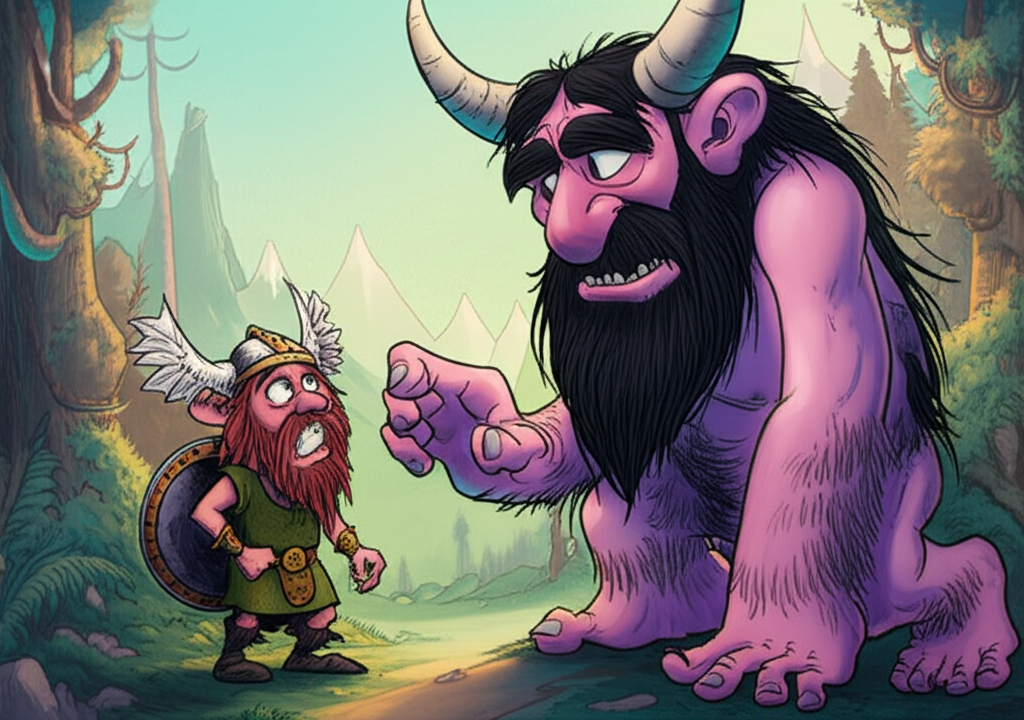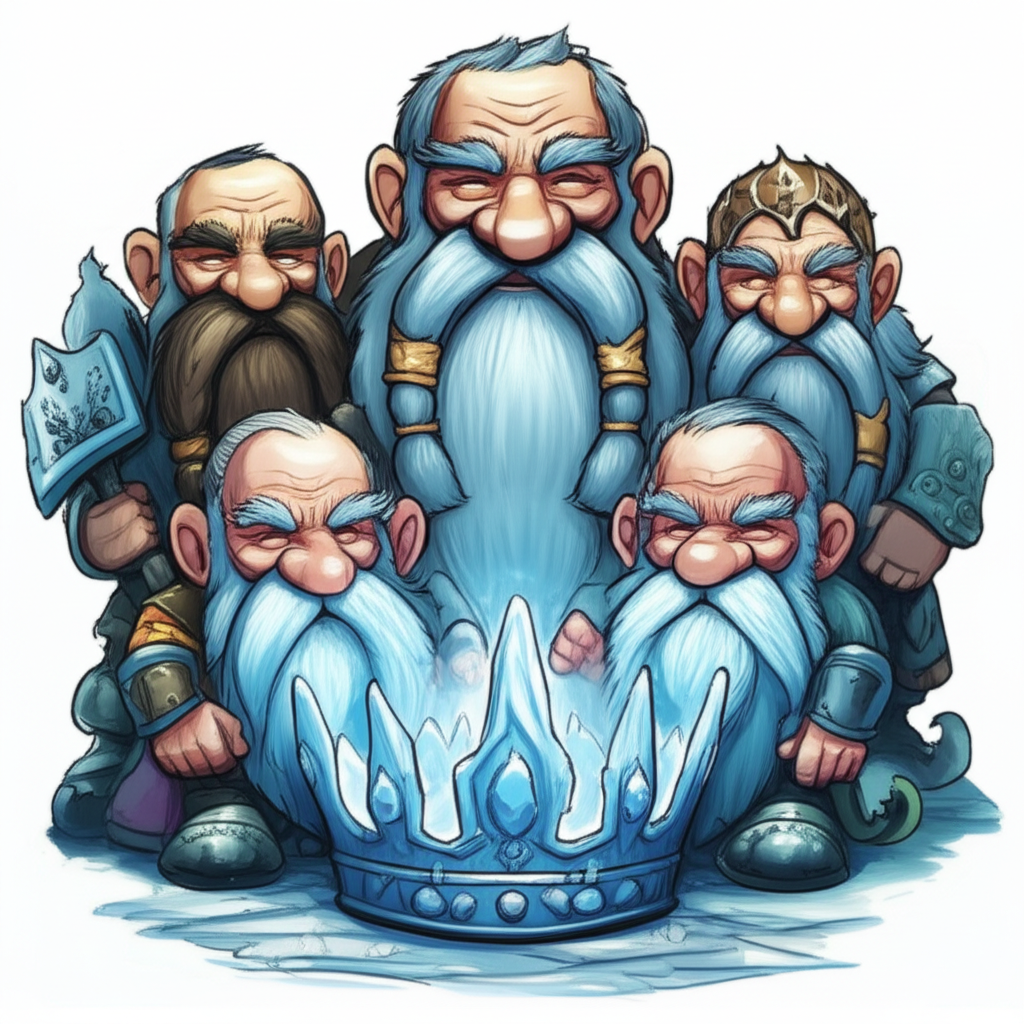
Across the windswept plains and deep, shadowed forests of ancient Northern Europe, where the seasons carved stark lines into the landscape and the long nights held a primal power, stories were woven. These were not mere tales; they were the fabric of understanding, the maps of the unseen world, crafted by communities seeking to explain the mysteries of existence. Among these ancient narratives, whispered around crackling hearths and sung in the echoing halls of chieftains, are the legends of the Alfar and the potent, enigmatic Crown of Winter. It is crucial to understand that these are traditional stories, born from the imagination and worldview of ancient peoples, not tenets of faith or historical fact.
The cultural milieu from which these stories emerged was one deeply intertwined with the natural world. For the Germanic and Norse peoples of the pre-Christian era, the world was a dynamic, often perilous place. The harsh realities of long winters, the unpredictable fury of storms, and the bounty of the land were all attributed to powerful, unseen forces. Their cosmology was populated by a pantheon of beings, from the mighty Aesir and Vanir who ruled the heavens and earth, to more elemental spirits and otherworldly entities that inhabited the wild places. Life was a constant negotiation with these forces, and myths served as a way to understand their whims, appease their anger, and draw wisdom from their power. The Alfar, or elves, were integral to this understanding, representing a realm of beings distinct from humans, often associated with nature, fertility, and a luminous, ethereal existence.
The Alfar, as depicted in these ancient tales, were not the diminutive, winged sprites of later folklore. Instead, they were often described as beings of radiant beauty and immense power, dwelling in realms parallel to the human world, such as Alfheim, the realm of the light elves. They were considered to be taller and more skilled than humans, possessing an innate connection to the forces of nature. The Alfar were often associated with light and purity, but also with a certain aloofness and a capacity for both great benevolence and subtle mischief. Their attributes were symbolic of the inherent energies of the natural world – the vibrant life of spring, the abundant growth of summer, and the mysterious, restorative dormancy of winter.
The legend of the Crown of Winter, while not always explicitly linked to the Alfar in every telling, often features them as custodians or creators of its power. Imagine a time when the world was young, and the seasons held an even more dramatic sway. It is said that in the deepest, coldest heart of winter, a crown of pure, unmelting ice was forged. This was not a crown of metal, but of solidified frost, imbued with the very essence of winter’s dominion. The Alfar, with their intimate connection to the cycles of nature, were believed to have either crafted this artifact or been its keepers. The Crown of Winter was not merely an adornment; it was a symbol of absolute control over the season, a conduit for its chilling power.
The narrative unfolds like a frosty tapestry. Picture the sun weakening, its rays growing thin and pale. The world begins to slumber, cloaked in a shroud of white. It is during this time, when the earth yields its warmth and the days shrink to mere slivers of light, that the Alfar would gather in their hidden glades. Their movements were as silent as falling snow, their forms shimmering with an otherworldly luminescence. The Crown of Winter, when it was brought forth, would radiate an intense, unearthly cold, a cold that could freeze the very breath in one’s lungs. It was said that whoever possessed this crown could command blizzards, summon icy winds, and freeze rivers solid with a mere thought. Some tales speak of an ancient Alfar king or queen, adorned with this crown, who presided over the winter months, their presence a palpable force of frost and stillness. The crown’s power was immense, a testament to the raw, untamed energy of winter, and its possession was a matter of great consequence, often leading to conflicts or quests undertaken by mortals or other mythical beings seeking its potent influence.
The symbolism embedded within the myth of Alfar and the Crown of Winter is rich and multifaceted. The Alfar themselves often represented the forces of creation and preservation, particularly those connected to the natural world. Their association with light and beauty could symbolize the hidden luminescence within nature, even in its dormant state. The Crown of Winter, however, embodies the more formidable aspects of this cycle. It speaks to the primal fear of the cold, of scarcity, and of the overwhelming power of nature to both sustain and destroy. It could symbolize the necessity of winter’s rest for future growth, the cyclical nature of life and death, or the inherent, sometimes harsh, order of the cosmos. For ancient peoples, understanding and respecting these cycles was paramount to survival, and the myth provided a framework for conceptualizing and narrating these profound forces. The crown could also represent leadership and authority, the ultimate power over a domain, in this case, the frigid reign of winter.
In contemporary times, these ancient stories continue to resonate, finding new life in various forms of media. The Alfar, often reimagined as elves, are staple characters in fantasy literature, video games, and films, embodying a range of traits from wise guardians to mischievous tricksters. The concept of a powerful artifact, like the Crown of Winter, is a recurring trope, symbolizing ultimate power or control over a specific element. While the direct narrative of Alfar and the Crown of Winter may not be as commonly retold, its thematic echoes – the power of nature, the allure of potent artifacts, and the existence of unseen realms – are pervasive in modern storytelling. These retellings, however, often draw upon broader mythological archetypes, reinterpreting them through contemporary lenses.
It is important to reiterate that the legends of the Alfar and the Crown of Winter are products of ancient human imagination, cultural narratives passed down through generations. They offer a fascinating glimpse into the worldview and beliefs of our ancestors. As Muslims, we recognize that the true Creator and Sustainer of all existence is Allah (SWT), the One God. These stories, while rich in cultural heritage and imaginative power, do not diminish this fundamental truth. Instead, they stand as testament to the enduring human need to understand the world around us, to find meaning in its mysteries, and to express that understanding through the powerful medium of storytelling. They remind us of the vastness of human creativity and the diverse ways in which cultures have sought to articulate their relationship with the forces that shape their lives, a tradition that continues to inspire and captivate to this day.





